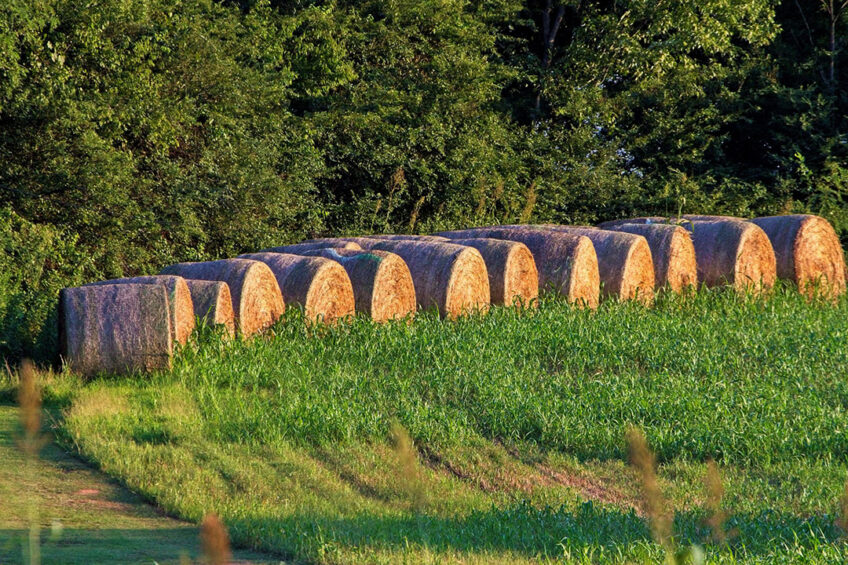8 tips for mycotoxin risk management in livestock feed

Mycotoxins, the secondary metabolites produced by fungi, are associated with significant challenges in food production industries.
Mycotoxin contamination in livestock feed causes an annual loss of $5 billion in the United States and Canada due to negative impacts on human and animal health, and both domestic and international trade. In the livestock industry, mycotoxin contamination enhances mortality rate, decreases productivity, and causes extra management costs including prevention, control, sampling, mitigation, and additional labour.
Mycotoxin contamination can occur at any time in the production cycle including pre-harvest, harvesting, processing, storage, feed manufacture, and shipment. In addition, the fungal flora varies significantly at each production stage; therefore, there is a possibility for different fungal colonization and mycotoxins development if proper care is not taken in the production cycle of crops.
 Beware of the impact of tillage
Beware of the impact of tillage
Tillage is the agricultural preparation of soil by mechanical agitation including digging, stirring, and overturning. Studies showed that concentration of deoxynivalenol and zearalenone in spring wheat and T-2 toxin in winter wheat were significantly lower in no-tillage systems. Therefore, it is essential to consider that whilst these agronomic practices are beneficial for soil conservation, they may increase mycotoxin levels in crops.
 Not all fungicides and fertilisers are beneficial
Not all fungicides and fertilisers are beneficial
There is considerable evidence that application of fungicides in field prevents and reduces mould growth. Strobilurins fungicides control head blight in wheat and prevent the growth of Fusarium strain. However, recent research studies showed that using certain classes of strobilurin containing kresoxym-methyl or azoxystrobin enhances deoxynivalenol content of wheat. In addition, high fertiliser rates significantly increase spring wheat grain infection with Fusarium avenaceum. Therefore, it is important to consider the type of fungicides and the amount of applied fertiliser in crop production.
 Pay attention to water activity value
Pay attention to water activity value
Water activity is defined as the unbound water found in feed which supports the growth of bacteria, yeasts, and moulds. Water activity is an accurate measure of mould growth potential in the crop which is measured on a scale of 0 (very dry) to 1 (pure water). A water activity value below 0.6 shows no risk of microbial or fungal deterioration of the feed. A water activity value between 0.6 and 0.9 shows a potential of mould growth and a water activity value of 0.9 shows the risk of bacterial growth. It is recommended to use mould inhibitors when the water activity value is above 0.6.
 Consider turnaround time of stored grains
Consider turnaround time of stored grains
Turnaround time of stored grains is an important factor to consider while storing the raw material. In the livestock feed industry, the best policy for raw materials use is ‘the first in, first out policy’. However, the risk of mould growth in cracked or broken grains is significantly higher than intact grains. Thus, it is recommended to use cracked grains prior to whole grains to prevent the build of moulds in storage bins and potential mycotoxin production.
 Apply effective quality control methods
Apply effective quality control methods
Regular control of manufacturing procedures and the implementation and close following of quality control methods such as Good Manufacturing Practices (GMP) and Hazard Analysis and Critical Control Points (HACCP) reduce the risk of mycotoxin contamination of feed.
 Test raw material regularly
Test raw material regularly
High-risk raw materials are required to be tested regularly for the presence of mycotoxins. Sampling methods to identify the fungi that produce mycotoxins or mycotoxins themselves include visual inspection, the use of black light, immunoassays, and chromatography.
 Dilute mycotoxin-contaminated grains
Dilute mycotoxin-contaminated grains
Dilution of mycotoxin-contaminated grains with mycotoxin-free grains is a common control method. However, in this method the “safe levels” for mycotoxins in feed are still uncertain and the mycotoxin -contaminated grains might exhibit negative effects on the immune system even at lower levels.
 Use correct levels of mould inhibitors
Use correct levels of mould inhibitors
Feed manufacturers add mould inhibitor to feed to maintain the proper feed quality. Although, low levels of mould inhibitors lose their effectiveness after 3 to 4 days and may not prevent or reduce growth in areas where the moisture level in the bin has increased through water migration. The mould inhibitors currently available include organic acids such as propionic, sorbic, benzoic and acetic acids, and salts of organic acids such as calcium propionate and potassium sorbate and copper sulphate.











